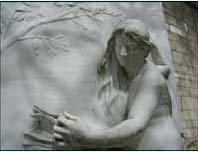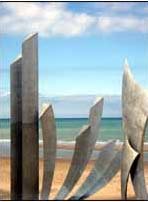That Summer in Paris
 That Summer in Paris is a book about writing, about writers and their writing, painting and sculpture and music and writing, painters and writers and sculptors and musicians and writers, old and established writers and aspiring young writers. As such, the words “writing” and "work" appear often enough in the text to each become a sort of mental jaw-breaker. Other than that, all is variety. A dizzying array of museums, streetscapes, cafés, restaurants, apartment dwellings and one suburban villa provide the backdrop for an amusing story line based on the proposition that older Indian writers, even the great ones, have trouble writing about sex.
That Summer in Paris is a book about writing, about writers and their writing, painting and sculpture and music and writing, painters and writers and sculptors and musicians and writers, old and established writers and aspiring young writers. As such, the words “writing” and "work" appear often enough in the text to each become a sort of mental jaw-breaker. Other than that, all is variety. A dizzying array of museums, streetscapes, cafés, restaurants, apartment dwellings and one suburban villa provide the backdrop for an amusing story line based on the proposition that older Indian writers, even the great ones, have trouble writing about sex.In the ordinary course of things, and counting Hanif Kureishi as a Briton, one might imagine that this chokehold on erotic expression, or at least on spelling things out - to which Salman Rushdie once admitted - is a collective inhibition imposed by social or political constraints. One conjectures that such constraints might have been in full operation, say, until Vikram Chandra exploded the mold. In this one particular, though, Abha Dawesar doesn’t make the mistake of conflating personal problems with public matters. Rather, her heroic old gent is bubbling within from his highly-colored yet basically unspeakable memories that feature guilt- and consequence-free incest and happy mid-life paedophilia, as well as an episode of Bollywood-inspired sadomasochistic adultery. It seems his fictionalizations have left too much to the imagination. Helpfully, Ms. Dawesar's own most fluid voice emerges in flashbacks about seduction and arousal and, very occasionally, mind-bending, seismic consummation, which goes to show that young Indian writers going forward will not suffer from whatever was ailing the oldies in times past.

I found many of the discussions about art, or rather, The Arts and a smattering of Philosophy, to be somewhat stilted, possibly because the material is unsuited for unfiltered use as conversational dialogue. The narrative is dotted, too, with implausible assertions and assumptions that might be the result of youth or inexperience – not least the sustained subtext of public art in well-frequented urban places invariably stimulating private arousal in old men and young women, never mind the notion that very short ten year olds can’t hear what is being said two feet above their heads. There are also quantities of uncomfortable prepositions, persistent intrusions of high school French, and a smattering of showstoppers such as, “The government buildings along the way stilled her restlessness.”
On the other hand, I was delighted with the frequent reference to a carefully and playfully built imaginary oevre of a fictional master storyteller, and the narrative device of continually using flashbacks of varying length to throw light on the present. The introduction of food, with a sad formula for Dal Sans Masala for One, threatened at first to swamp the story with bad recipes and worse menus (buns, mustard, beer and portobello mushrooms), but instead, the use of food grew with the telling to embrace considerable gatronomic expertise, a highly suggestive and indeed climactic sampling of cheeses, and, curiously, the tossing of at least two half-eaten chapattis into the trash and a hunt for a Parisian subsitute for pakoras, the last appearing soon after a mid-story change of race.

All in all, this is a merry romp to somewhere, and I wish all those who pick it up an enjoyable read. For those who need illustrations, Ms. Dawesar has posted those reproduced here and many more pictures at:
abhadawesar.com

<< Home